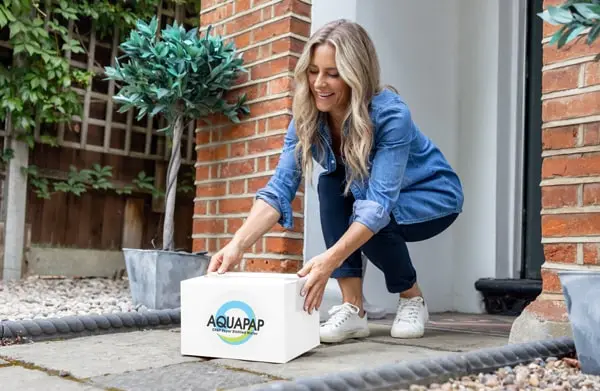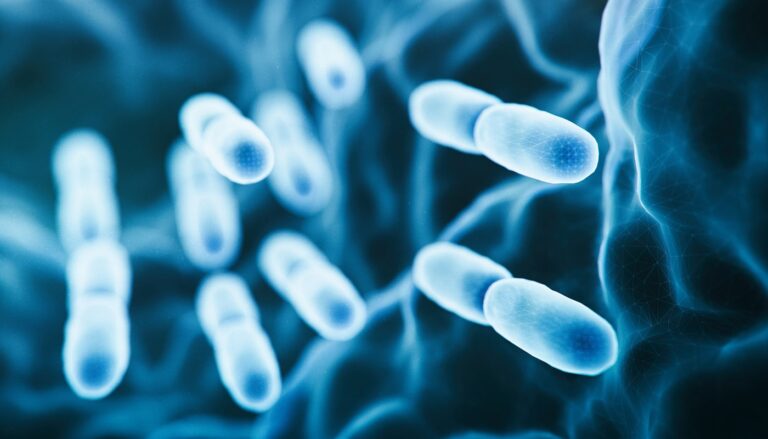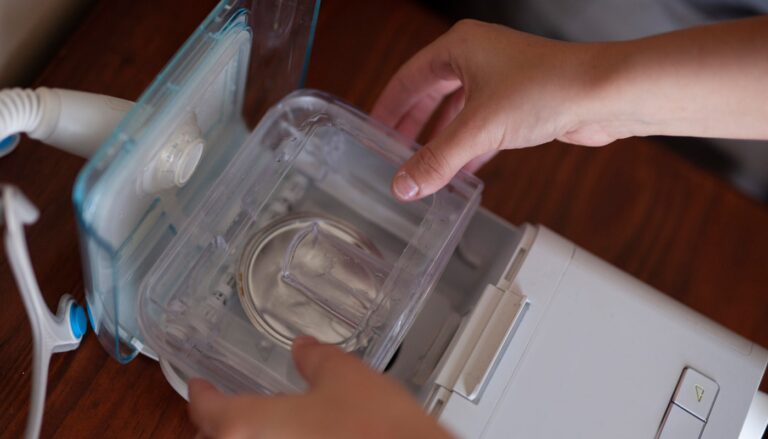In its purest form, water holds a profound yet often overlooked significance in the culinary world. Among its various forms, distilled water is a unique and intriguing element in cooking and baking. This article delves into the essence of distilled water, unraveling its characteristics and pivotal role in the kitchen. Distilled water has undergone a purification process known as distillation. This method involves boiling water to produce vapor and then condensing this vapor back into a liquid form. The result is water in its most stripped-down state: devoid of minerals, impurities, and any inherent flavor that might be present in tap, mineral, or spring water. This purity makes distilled water an intriguing subject in culinary practices.
Distilled water is often associated with its applications in scientific laboratories and medical facilities due to its sterile nature. Its uses extend to various industrial processes and even to automotive cooling systems. However, its role in cooking and baking is less discussed but equally significant. This form of water can bring a new dimension to culinary arts, offering a blank canvas that allows the true flavors of ingredients to shine, untainted and pure. The significance of distilled water in the kitchen is multifaceted. Its impact ranges from the subtle nuances in the taste of a dish to the textural integrity of baked goods. For the discerning cook or baker, understanding how distilled water can influence the outcome of their creations is both an art and a science.
Discover the purity of Aquapap distilled water – Elevate your cooking and baking today.
What is Distilled Water?
In pursuing purity, distilled water stands as a pinnacle in the water world. Aquapap has championed this cause by providing the highest distilled water for various needs. But what exactly is distilled water, and how does it differ from other types of water, such as spring, mineral, or tap water? Understanding this is key to appreciating the value that Aquapap brings to the table with its meticulously processed water. Distilled water begins as regular water but transforms into distillation, miming the natural hydrologic cycle. In distillation, water is boiled to produce steam, which is then cooled and condensed into liquid form. This process strips away impurities, minerals, and contaminants, resulting in water in its most elemental form: H2O. The absence of added substances means distilled water provides a neutral and consistent base, free from any external influences that could alter the taste or outcome of its use, particularly in sensitive medical devices.
Comparatively, other types of water, like spring and mineral water, are valued for their natural minerals and trace elements. While these minerals are beneficial for drinking purposes, they can be less desirable in contexts where purity and neutrality are paramount, such as in medical applications or precise culinary uses. Conversely, tap water varies widely in quality and composition, often containing chlorine, fluorides, and other substances to make it safe for consumption. However, these additives and varying mineral contents can affect taste and chemical reactions in cooking and baking. Aquapap, recognizing the critical need for pure, uncontaminated water, especially in medical settings, offers a convenient and safe solution with its vapor-distilled water. The brand’s commitment to providing small-size, single-serving bottles ensures that each use is as pure as the first, eliminating the risk of contamination from repeated exposure to air – a common problem with larger containers. This attention to detail not only underscores the importance of using distilled water for maintaining the efficacy of medical devices but also highlights the versatility of distilled water in various other applications.
For those who have experienced the hassle of transporting and storing giant, unwieldy jugs of distilled water, Aquapap’s conveniently sized bottles are a revelation. The ease of use and assurance of purity with each bottle make Aquapap an indispensable ally for anyone requiring distilled water, whether for CPAP machines, humidifiers, or even a pure, refreshing drink. Moreover, the brand’s commitment to delivering right to your doorstep or travel location further simplifies life, offering purity and convenience in every drop.
Benefits of Using Distilled Water in Cooking
The quality of ingredients plays a pivotal role in the outcome of a dish. However, one crucial ingredient often overlooked is the water used in the cooking process. Here, at Aquapap, we understand that the purity of water can significantly influence the flavors and textures of food. By using distilled water, chefs and home cooks can unlock many benefits, enhancing the culinary experience. Its purity is The primary advantage of using distilled water in cooking. Unlike tap or mineral water, distilled water is free from dissolved minerals, chemicals, or impurities. This absence of extraneous elements means that when you cook with distilled water, the natural flavors of your ingredients are allowed to shine through more vividly. This is particularly noticeable in dishes where water is crucial, such as soups, broths, and sauces. By using distilled water, these dishes maintain a clarity of flavor unmarred by the subtle tastes and odors that regular water might impart.
When cooking vegetables, grains, and legumes, the benefits of distilled water become even more apparent. Vegetables cooked in distilled water often retain a more vibrant color and a crisper texture. This is because regular tap water, which contains trace amounts of minerals like calcium and magnesium, can sometimes react with certain vegetables, altering their color and texture. These reactions are avoided with distilled water, ensuring your vegetables look as good as they taste. Grains and legumes also benefit significantly from being cooked in distilled water. For instance, a lack of minerals in distilled water can lead to a more consistent texture and cooking time when cooking rice or beans. Grains are less likely to become overly soft or mushy, as there are no additional minerals to interfere with water absorption. This results in perfectly cooked rice, quinoa, or other grains each time. Similarly, legumes like beans and lentils cook more evenly, without the hard-to-cook spots that sometimes occur with hard water.
Another significant benefit of using distilled water in cooking is the prevention of mineral deposits. In areas with hard water, cooking can lead to the buildup of limescale and other mineral deposits on cookware. Over time, this not only diminishes the appearance of the cookware but can also affect its performance and the taste of the food cooked in it. Distilled water, being free from these minerals, ensures that pots and pans remain clean and free from buildup, prolonging their lifespan and maintaining the integrity of the flavors in your cooking. At Aquapap, we also understand that the purity of distilled water is beneficial for cooking and crucial for individuals with specific dietary needs or sensitivities. For those on low-sodium diets or with sensitivities to certain minerals, cooking with distilled water provides a safe and reliable option, ensuring their food is free from unwanted additives.
Incorporating distilled water into your cooking regimen is a choice for purity and a commitment to elevating the quality of your culinary creations. As we at Aquapap provide conveniently sized, single-serving bottles of distilled water, embracing this level of culinary excellence has never been easier. Whether you’re a professional chef or a home cook, the switch to distilled water can be a simple yet transformative step in your cooking journey. Using distilled water in cooking is more than just a technicality; it enhances the culinary experience. The benefits are clear, from the vibrant colors of vegetables to the perfect consistency of grains and legumes. With Aquapap’s commitment to providing pure, convenient, and high-quality distilled water, embracing these benefits in your kitchen is effortless. Join us in exploring the untapped potential of distilled water in cooking and experience the difference in taste, texture, and overall quality of your dishes.
Transform your recipes with Aquapap – Click here for the purest water choice.
Distilled Water in Baking: Does it Make a Difference?
Baking is an art form that blends science and creativity, where every ingredient plays a crucial role in the final product. Water often considered a mere auxiliary ingredient, is significant in baking. At Aquapap, we’ve explored the impact of using distilled water in baking and gathered insights from baking experts to understand how it can make a difference in the texture and outcome of baked goods. The role of water in baking is multifaceted. It’s not just about hydration; water is integral in activating yeast, developing gluten, and determining the final product’s texture. Yeast, a key ingredient in many baked goods, requires water to become active. However, the type of water used can influence the yeast’s effectiveness. Tap water, with its varying levels of chlorine and minerals, can sometimes inhibit yeast activity, leading to less-than-optimal dough rising. Distilled water, free from these impurities, provides a more consistent environment for yeast activation, ensuring reliable fermentation and rise in your breads and pastries.
Gluten formation, another critical aspect of baking, is also influenced by water quality. When water mixes with flour, gluten proteins develop, giving the dough structure and elasticity; the absence of minerals in distilled water means these gluten proteins can form more efficiently, resulting in a more consistent texture. This is particularly noticeable in breads and other baked goods where gluten development is critical to achieving the desired chewiness and structure. From the perspective of professional bakers and baking experts, using distilled water in baking is often seen as a step toward precision and consistency. Bakers strive for repeatability in their recipes, and the unpredictable nature of tap water can sometimes be a variable they’d prefer to control. Distilled water offers this control, eliminating the guesswork about water quality and its effects on baking. Moreover, the purity of distilled water can enhance the other flavors in baked goods. Without additional minerals or chemicals, the authentic flavors of ingredients like butter, sugar, and chocolate can shine through more vividly. This is particularly important in delicate pastries and desserts, where subtle flavor differences can be noticeable.
The texture of baked goods can also be impacted by distilled water. Cakes, for instance, can turn out lighter and fluffier, and pie crusts more tender as the water interacts more gently with the flour, preventing the overdevelopment of gluten, which can lead to toughness. At Aquapap, we’ve recognized the importance of the quality and the quantity of water used in baking. Our conveniently sized bottles allow bakers to measure the water needed for their recipes, ensuring consistency and precision in their baking endeavors. The insights from baking professionals further reinforce the idea that while water might seem essential, its quality can elevate the baking craft. By using distilled water, bakers can ensure that they are starting with the purest base, free from any external variables that might affect the taste, texture, and overall quality of their baked goods.
Myths and Misconceptions About Distilled Water in the Kitchen
Despite its proven benefits, distilled water is often surrounded by myths and misconceptions, particularly regarding its use in the kitchen. At Aquapap, we believe in providing high-quality distilled water and educating our customers about its safe and beneficial use. Here, we address some of the most common myths and provide scientific and expert-backed explanations to debunk them.
Myth 1: Distilled Water is Harmful to Consume
One of the most prevalent myths is that distilled water harms the body because it lacks minerals. While it’s true that distilled water does not contain minerals, this absence does not make it harmful. The human body primarily receives essential minerals from food, not water. Drinking distilled water does not deprive the body of these nutrients. Moreover, the purity of distilled water means it’s free from potentially harmful substances found in tap water, such as lead, chlorine, and fluoride, making it a safer choice for consumption, especially for those with specific health concerns.
Myth 2: Distilled Water Leaches Minerals from the Body
Another common misconception is that distilled water leaches minerals from the body, leading to mineral deficiencies. This myth stems from a misunderstanding of how the body balances minerals. The body’s mineral levels are primarily regulated through food intake and metabolic processes, not the type of water consumed. No scientific evidence suggests that drinking distilled water leads to mineral deficiencies in individuals with a balanced diet.
Myth 3: Distilled Water Alters the Taste of Food Negatively
Due to its lack of minerals, some believe that distilled water negatively alters the taste of cooked food. On the contrary, the neutrality of distilled water enhances the ingredients’ natural flavors. Without additional minerals or impurities, which can sometimes impart subtle flavors, distilled water allows the authentic taste of food to prevail. This is particularly beneficial in recipes where the purity and clarity of flavors are paramount.
Myth 4: Distilled Water is Only for Medical or Industrial Use
While distilled water is widely used in medical and industrial settings due to its purity, its use is not limited to these areas. Distilled water has various applications in the kitchen, from cooking and baking to brewing coffee and tea. Its consistent quality and purity make it an excellent choice for culinary enthusiasts seeking precision and optimal flavor.
At Aquapap, we are committed to debunking these myths and promoting the safe and beneficial use of distilled water in everyday life. Our focus on providing conveniently sized, pure distilled water aims to make it an accessible and practical choice for various needs. By understanding the facts about distilled water, our customers can make informed decisions and enjoy its numerous benefits in the kitchen and beyond. The myths surrounding distilled water often stem from misconceptions and a lack of understanding. Through scientific evidence and expert insights, it’s clear that distilled water is safe for consumption and beneficial for various culinary applications. As we continue to provide high-quality distilled water, we encourage our customers to explore its many uses and enjoy the purity it brings to their lives.
Experience the difference in taste and texture. Try Aquapap distilled water now.
Practical Tips for Using Distilled Water in Recipes
Incorporating distilled water into your cooking and baking repertoire can elevate the quality of your dishes in subtle yet significant ways. At Aquapap, we understand the importance of using the right ingredients correctly. Here are some practical guidelines, tips on when and how to use distilled water in your culinary creations, and advice on storage and handling.
When to Use Distilled Water in Cooking and Baking
Tea and Coffee: The purity of distilled water makes it ideal for brewing tea and coffee. It allows the natural flavors and aromas of the tea leaves or coffee beans to emerge without being overshadowed by the minerals or impurities present in tap water.
Soups and Broths: Distilled water can be a game-changer when preparing soups and broths. It ensures that the flavors of the ingredients are clean and pronounced, without any unintended aftertaste.
Cooking Grains and Legumes: Grains like rice and quinoa and legumes like beans and lentils benefit from being cooked in distilled water. It promotes even cooking and prevents mineral deposits from affecting texture and taste.
Preparing Baby Formula: For parents who make baby formula, distilled water is the safest choice, ensuring that the water used is free from impurities and safe for the baby.
Baking: In baking, precision is critical. Using distilled water can help achieve consistent results. It’s vital in recipes sensitive to mineral content, such as bread and delicate pastries.
Recipes Where Distilled Water Makes a Noticeable Difference
Artisan Breads: In bread-making, particularly for artisanal styles, distilled water can ensure that the yeast performs optimally, leading to better rise and texture.
Delicate Sauces: For sauces that require a subtle balance of flavors, distilled water can ensure that the taste remains unaltered by external factors.
Preserves and Jams: When making preserves and jams, distilled water can help maintain the fruit’s natural flavor and color.
Storing and Handling Distilled Water
Proper Storage: Keep your Aquapap distilled water in a cool, dry place away from direct sunlight. Even though distilled water is pure, it’s best to store it properly to maintain its quality.
Handling: Use clean utensils when handling distilled water to prevent contamination. Even though the water is pure, external sources can still contaminate it.
Using Freshly Opened Bottles: For the best results, especially in medical or sensitive culinary applications, use a freshly opened bottle of Aquapap distilled water. This ensures the water is as pure as possible.
Avoiding Cross-Contamination: Once a bottle is opened, use it within a reasonable time to prevent potential contamination from prolonged environmental exposure.
Recycling Bottles: Aquapap is not just about providing quality; it’s also about sustainability. Remember to recycle the bottles after use.
Incorporating distilled water into your kitchen practices can be a simple yet impactful change. Whether you’re a professional chef, a baking enthusiast, or a health-conscious individual, understanding when and how to use distilled water can make a significant difference in your culinary endeavors. With Aquapap’s commitment to providing high-quality, convenient distilled water, adopting these practices is easier than ever.
Unleash culinary excellence with Aquapap.
Cost and Accessibility of Distilled Water
Considering cost and accessibility is paramount when choosing water for cooking, baking, and other household uses. Distilled water, often perceived as a premium product, presents an economically viable option when its benefits are weighed against its cost. Aquapap, dedicated to making distilled water readily accessible, plays a crucial role. Let’s explore the cost comparison of distilled water with other types of water and discuss its accessibility.
Cost Comparison with Tap and Other Types of Water
Distilled water offers unparalleled purity and consistency while slightly more expensive than tap water. Tap water, the most cost-effective option comes with varying levels of minerals and potential contaminants depending on the location. While generally safe for consumption and cooking, tap water can sometimes impart unwanted flavors or reactions in food and is unsuitable for all medical or culinary uses.
Distilled water is often similarly priced or slightly higher than bottled spring or mineral water but serves a different purpose. While spring and mineral waters are sought for their taste and mineral content, distilled water is chosen for its lack of these attributes, providing a neutral base for various uses.
The cost of distilled water, such as that provided by Aquapap, is justified by its purity, safety, and the convenience of its packaging. The small-size, single-serving bottles eliminate waste and reduce the risk of contamination, which can be a concern with larger, multi-use containers.
Accessibility and Home Distillation
Distilled water is widely available in grocery stores, pharmacies, and online. Aquapap further simplifies access by offering doorstep delivery, making it a hassle-free option for those who rely on distilled water for health, culinary, or other reasons.
The right equipment can distill water at home for those interested in a more hands-on approach. Home water distillers are available for purchase, and they work by boiling water into steam and then condensing it back into liquid, similar to commercial distillation processes. However, the equipment cost and energy required for home distillation should be considered. While distilled water may come with a slightly higher price tag than tap water, its benefits in terms of purity and safety offer considerable value. Aquapap’s commitment to making distilled water accessible and convenient, coupled with the option of home distillation, ensures that this valuable resource is within reach for those who need it, be it for health-related uses, culinary excellence, or other purposes.
Embracing Purity in Your Culinary Journey
Distilled water’s purity is its hallmark, setting it apart from tap, spring, and mineral water. This purity is not just about what is absent (impurities and minerals) but also about what it brings – a blank canvas for chefs and home cooks to paint their culinary masterpieces. Whether brewing a perfect cup of coffee, cooking vibrant and crisp vegetables, or baking artisan bread, distilled water ensures consistency, clarity, and precision. The practicality of using distilled water in everyday cooking and baking cannot be overstated. With Aquapap, accessing high-quality distilled water is effortless, thanks to our convenient, single-serve bottles and reliable delivery service. The ease of storing and using our distilled water makes it a practical choice for various culinary and household needs. We encourage you to experiment with distilled water in your recipes and experience the difference it can make. Whether you’re a professional chef, a baking enthusiast, or someone who values purity and quality, distilled water is an ingredient worth exploring. Visit the Aquapap shop to discover how our distilled water can transform your culinary journey. Embrace the purity, taste the difference, and elevate your cooking and baking to new heights with Aquapap.






